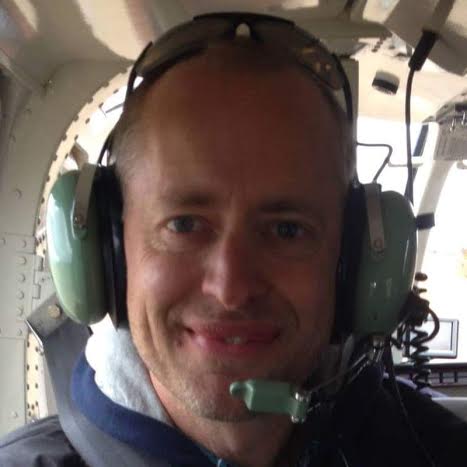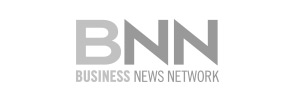Graphite One has the only large, advanced-stage, high-grade graphite deposit in the United States. The growing importance of this essential industrial mineral is adding to the value of domestic supplies as users seek secure sources of this critical material. The United States presently imports all of its natural supplies of graphite.
Graphite is a critical component in a wide range of industrial and consumer products. It is becoming ever more important as many new applications are emerging.
Graphite has unique physical and chemical properties which make it essential in a wide variety of industrial applications. For example, graphite is uniquely suited to withstand extremely high temperatures as well as being corrosion resistant.
Graphite is also a crucial component in most electric batteries. The rapid emergence of new battery technologies for use in portable electronic devises and electric vehicles has accelerated the growth in demand for graphite. Other emerging high tech applications, including graphene, are pointing to a further boost in demand for this mineral. Two articles in this issue provide more background on graphite and graphene.
While demand for graphite has been growing, and is poised to further accelerate, supplies have been constrained: China, which supplies 70% of the global graphite market, is restricting exports to satisfy its domestic needs. Not surprisingly, the price of graphite has more than doubled over the past three years and users are growing concerned about the security of supplies. The US makes synthetic graphite in order to assure supplies of high-purity material that is critical to certain applications. The synthetic material is far more expensive than natural graphite.
The Graphite One management team, foreseeing the evolution of the graphite market and the strategic importance of a domestic source of supply, acquired the Graphite Creek project in 2012. Since then, they have made a great deal of progress in advancing that past producing project toward development. Most importantly, they have established a large, high-grade compliant resource which ranks the deposit by far the best available in the country.
The Graphite One management team has had considerable success in prior ventures, with both junior and large company experience:
- Anthony Huston, president and director, is a successful entrepreneur with a background in business development and finance.
- Dean Besserer, vp exploration and director, was a principal and managing director of APEX Geoscience, a highly regarded international geological consulting firm. He has considerable exploration experience, including graphite.
- Peter Kleespies, director, has 25 years of experience in mineral exploration and mine development projects, having worked for both junior and senior companies.
- Jim Currie, director, is a mining engineer with over 34 years of experience in the mining industry. He worked in executive management roles for First Quantum Minerals, Miramar Mining and New Gold, where he was executive vice-president and COO.
- John Williamson, advisor, has more than 25 years of experience, including 18 years in the management, development and governance of public companies conducting worldwide mineral exploration and mining.
- John Robins, advisor, is a professional geologist with over 25 years of experience as an independent exploration geologist and entrepreneur. In 1988, he founded one of Canada’s most successful private exploration companies and later co-founded the Discovery Group of Companies, which has spawned several successful companies, including Kaminak Gold.
The importance of the Graphite Creek deposit and the progress made by the company over the past year have been lost in a market that has had little interest in resource companies. With investor interest coming back to resources, and important developments pending for the company, this is a good time to look closely at Graphite One.
The Graphite Creek deposit is located near tidewater, 40 kilometers north of Nome on the Seward Peninsula of Alaska. The property comprises 70 square kilometers, covering a district-scale cluster of graphite occurrences and deposits.
Graphite was discovered there in 1898 in the course of exploration for gold. Production of graphite on a small scale took place in the early 1900s, with material having been mined at surface and through short adits.
The area was examined by the United States Geological Survey (USGS) in 1943. The graphite occurrences were referenced in several USGS publications from the 1970s through the 1990s. The last exploration was a brief program conducted by Anaconda in 1981.
Graphite One assembled the district-scale property beginning in early 2012 by way of four separate agreements and through staking of open ground. The company can earn a 100% interest, subject to royalties, through modest cash payments, shares and work requirements.
The graphite is hosted in a metamorphosed sedimentary rock unit (schist) that extends along the northern flank of the Kigluiak Mountains. Graphite, mostly as large flakes, is disseminated throughout that unit with grades of 2% to 6% over wide intervals, typically well over 100 meters. High-grade lenses in a particular rock subunit carry 55% to 60% graphite (up to 80%).
Fieldwork during the summers of 2011 and 2012 included geological mapping and surface sampling throughout the prospective trend, along with geophysics and drilling. They also collected nearly 10 tonnes of bulk sample material from three locations for analytical testing. The 2012 program included a helicopter-borne geophysical survey (time domain electromagnetic and magnetic) flown at 50 meter spacing. With the extensive surface sampling (and later drill results) to provide ground truth, the survey identified a geophysical trend that showed good continuity between surface exposures. A strong geophysical signature also showed the trend extending for 18 kilometers.
Graphite One conducted the first ever drilling on the property during 2012. That program included 17 holes to test a specific area of known graphite mineralization (based on surface samples). The program was designed to have sufficient drill spacing to support an initial inferred resource estimate. All 17 holes intersected graphite, with the mineralization typically occurring throughout the length of the drill core. The drilling confirmed the presence of graphite from surface to depths in excess of 225 meters. The eighteenth hole tested the graphite along the geophysical corridor 2.2 kilometers west of the main drill zone. That hole encountered 177 meters of 3% graphite, including 6% over 52 meters plus 7% over 31 meters. “The step-out hole shows the potential for continuous high-grade mineralization along the geophysical corridor” according to the independent technical report on that program.
That report outlined an initial inferred resource of 107 million tonnes with an average grade of 5.8% graphite, representing 6.2 million tonnes of contained graphite. (These figures are based on a cutoff grade of 3%.)
The geological potential of the deposit is far greater than these figures, as the resource is delineated along only 2 kilometers of a prospective zone that is 18 kilometers long. The results of the step-out drill hole, 2.2 kilometers away, support the premise that at least a portion of that trend may host economic grades and thicknesses.
Based on the step-out drill hole and the other available information, the engineers estimated the potential of the zone that was drilled through to the step-out hole. Their estimate (which is conceptual in nature) is a potential tonnage of 235 million to 492 million tonnes grading in the range of 4.2% to 7.9%, hosting 9.9 million to 38.9 million tonnes of graphite.
In the 2013 field season, the geological team drilled a further ten holes, totaling 1,023 meters. The final five holes in the program were reported in early January, with all of the holes encountering graphite from top to bottom. Highlights include 102 meters of 3.3% graphitic carbon (Cg), including 40 meters of 7.1% Cg and 16 meters of 10.2% Cg. Another hole cut 86 meters of 5.1% Cg, with a 10 meter interval carrying 13.1% Cg.
Drilling has now outlined high-grade, near surface graphite over wide intervals, along a mineralized trend that extends for 4.8 km, double the area that supported last year’s resource estimate. An update resource estimate is expected before the end of January.
Even before the updated resource estimate, Graphite Creek is one of the largest known graphite occurrences. Only 4.8 km of the 18 km long prospective zone has yet been tested, with the balance of the trend offering further upside potential.
In addition to the enormous size of the resource, there is also potential to identify zones with substantially higher grades. For example, the resource estimate identified 7.8 million tonnes grading 13.5% graphite. Lenses located within a particular sub-unit of the schist host grades up to 80%. The geophysical survey results may provide help in identifying those bodies, as they have a high magnetic signature. Other indicators will also be refined as the understanding of the geological setting evolves, improving the prospects for identifying further high-grade occurrences.
There are other deposits in the world with higher average grades. However, the enormous size of this deposit, at a favorable grade, together with the potential to identify substantial zones with higher grades, makes this an extremely attractive deposit.
The Graphite Creek deposit represents a very favorable mining scenario. The engineers envision an open cut mining operation with a “very low waste to ore ratio”, implying a low mining cost. The property is 18 kilometers from the nearest road, but it has water access through Imuruk Basin, which is connected to the open ocean. While that access would be seasonal, it would provide low cost transport for moving equipment, fuel, materials and concentrate. Engineering and environmental studies are presently underway.
The Graphite Creek deposit has an exceptionally high proportion of high-value large flake graphite: Flake size distribution from surface and drill core samples show that 59% to 93% occurs as large flake graphite.
Preliminary metallurgical testing shows good recoveries into a high quality graphite concentrate using conventional flotation. A first pass beneficiation test in 2013, conducted by an independent testing facility, demonstrated a leaching process capable of producing high purity 99.2% graphitic carbon (Cg) from a rough concentrate. There are no deleterious elements. Metallurgical testing is ongoing to develop a simple concentration and leaching process intended to produce an ultra-high purity (99.9% Cg) graphite product.
The large flake size together with the ability to produce high purity material suggests that this material would receive the top price, in the order of $3,000 a tonne.
In summary:
- The Graphite Creek deposit is one of the largest known graphite deposits anywhere, with potential to get even bigger.
- Areas within the overall deposit have grades and sizes in line with the highest grade deposits reported by other companies.
- This is the only large, high-grade, advanced-stage graphite deposit in the US, giving it huge strategic advantages.
- The project is in the mining-friendly jurisdiction of Alaska.
- It is in a favorable setting for mine development: open-pittable, with a low strip ratio.
- The material is easily concentrated, and can be upgraded to high purity.
- A high proportion of the graphite is large flake.
- A high purity product can be produced, which together with the large flake size, would receive top prices.
The exceptional merits of the Graphite Creek deposit have been over-looked by investors over the past year when little attention was paid to any resource company. Investor interest is returning to the resource markets, and companies like Graphite One, with exceptional projects, will be the first to benefit.
A number of important news items over the coming months will draw investor attention to this company: The updated resource estimate expected within weeks will highlight the enormous size of the deposit, as well as the potential to identify areas with much higher grades. The on-going metallurgical testing will add further confidence in the ability to create a high-value product, featuring both large flake size and high purity. Engineering and environmental work is on-going.
As that information is coming together, management will be formulating plans for the up-coming field season, which will further crystallize the value of this project. With the graphite and graphene stories gaining traction in the investment community, Graphite One will be front and center, with the only world-class US-based graphite project. That deposit has both size and grade, along with a favorable location for mine development and the team to advance it to development.
Price January 13th, 2014: C$0.14
Shares Outstanding: 117.7 million
Shares Fully Diluted: 181.5 million
Market Cap: C$16.4 million
Contact: Anthony Huston, President
AnthonyH@GraphiteOneResources.com
604-697-2862
www.graphiteoneresources.com
 James Kwantes is the editor of Resource Opportunities, a subscriber supported junior mining investment publication. Mr. Kwantes has two decades of journalism experience and was the mining reporter at the Vancouver Sun. Twitter:
James Kwantes is the editor of Resource Opportunities, a subscriber supported junior mining investment publication. Mr. Kwantes has two decades of journalism experience and was the mining reporter at the Vancouver Sun. Twitter:  Resource Opportunities (R.O.) is an investment newsletter founded by geologist Lawrence Roulston in 1998. The publication focuses on identifying early stage mining and energy companies with the potential for outsized returns, and the R.O. team has identified over 30 companies that went on to increase in value by at least 500%. Professional investors, corporate managers, brokers and retail investors subscribe to R.O. and receive a minimum of 20 issues per year. Twitter:
Resource Opportunities (R.O.) is an investment newsletter founded by geologist Lawrence Roulston in 1998. The publication focuses on identifying early stage mining and energy companies with the potential for outsized returns, and the R.O. team has identified over 30 companies that went on to increase in value by at least 500%. Professional investors, corporate managers, brokers and retail investors subscribe to R.O. and receive a minimum of 20 issues per year. Twitter: 
